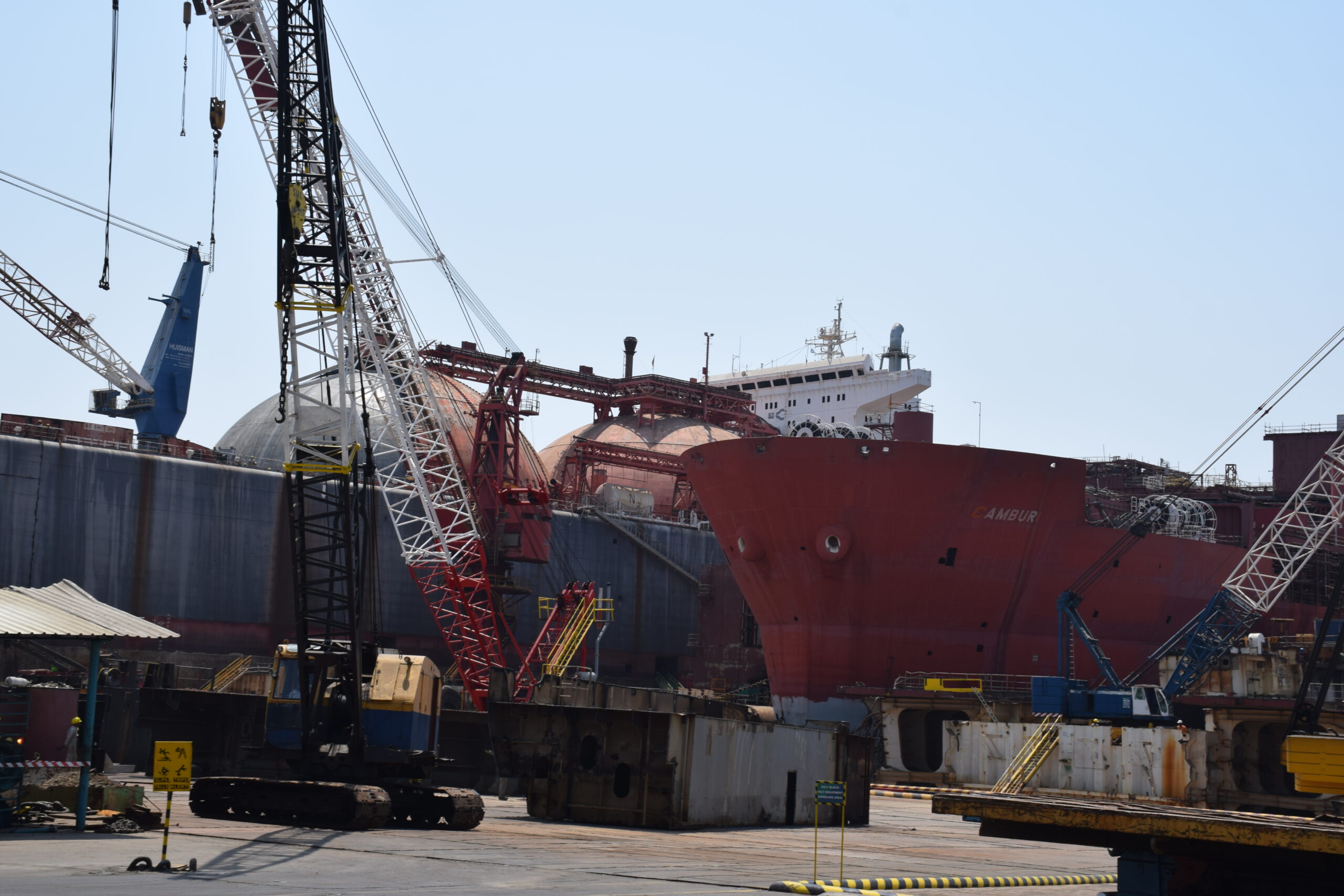India’s Maritime Future: Anchoring Growth and Sustainability
India’s maritime legacy is as expansive as its 7,500-kilometer coastline, encompassing a dynamic network of 12 major ports and over 200 minor ports. Strategically located along the world’s busiest shipping routes, the country serves as a vital trading hub and a rising global power. In 2023, India accounted for 16% of global economic growth and is poised to become the world’s third-largest economy within the next three years. This economic ascent places its maritime sector at the heart of its trade, connectivity, and international cooperation ambitions.

As India charts its course in the global maritime domain, the nation faces unprecedented opportunities and significant responsibilities. To establish itself as a leader in marine governance, India must engage deeply with global policymakers, business leaders, and visionaries. Events like the inaugural ‘Sagarmanthan: The Great Oceans Dialogue’ in November 2024 in New Delhi underscore the country’s intent to shape conversations around sustainability and innovation in maritime practices.
India’s Maritime Sector: A Pillar of Economic Growth
The maritime sector forms the backbone of India’s trade, handling approximately 95% of the nation’s trade by volume and 70% by value. With its key position along global shipping lanes, most cargo ships traveling between East Asia and regions like Europe, Africa, and the Americas pass through Indian waters. This strategic location amplifies the country’s importance in global trade.
India has bolstered its maritime capabilities significantly in recent years. The fleet under the Indian flag numbered 1,530 ships in 2023, reflecting its growing presence in international shipping. Additionally, India ranks third globally in ship recycling by tonnage, demonstrating its commitment to sustainable practices. Between 2014-15 and 2023-24, the country’s major ports increased their cargo-handling capacity from 871.52 million tonnes to 1,629.86 million tonnes—an impressive 87% growth. This progress is mirrored in merchandise exports, which surged to USD 451 billion in FY23 from USD 417 billion the previous year.
The government’s proactive measures have been instrumental in this growth. Policies such as allowing 100% Foreign Direct Investment (FDI) under the automatic route and offering 10-year tax holidays for port development projects have attracted significant investments. These initiatives, coupled with a focus on modernizing port infrastructure, have positioned India as a cornerstone of global maritime trade.
Sagarmanthan: Charting a Future-Ready Maritime Ecosystem
The ‘Sagarmanthan: The Great Oceans Dialogue’, organized by the Ministry of Ports, Shipping and Waterways (MoPSW) in partnership with the Observer Research Foundation (ORF), represents a landmark moment for India’s maritime aspirations. Held on November 18-19, 2024, in New Delhi, this forum gathered global leaders, policymakers, and visionaries to discuss critical themes such as the blue economy, global supply chains, maritime logistics, and sustainable growth.
Key Thematic Pillars
- Sustainability and Blue Economy
Exploring the economic potential of oceans while ensuring their ecological health is a central focus. Discussions revolved around sustainable fisheries, renewable energy, and reducing the maritime sector’s carbon footprint. - Global Supply Chains and Connectivity
India’s ports are pivotal nodes in international trade. Strategies to enhance efficiency and streamline global supply chains were key topics of discussion. - Innovation and Technology in Maritime Logistics
With advancements in digital tools and automation, the maritime sector is transforming. Sessions highlighted India’s initiatives in smart ports and digitized trade platforms. - Governance and International Cooperation
Strengthening global partnerships and shaping maritime policies for equitable and sustainable practices were emphasized.
Major Initiatives and Milestones in India’s Maritime Journey
India’s maritime growth is underpinned by ambitious initiatives and policies that aim to modernize infrastructure and promote sustainability:
Port Modernization and Capacity Expansion
- In FY24, major ports achieved a container turnaround time of 22.57 hours, exceeding global benchmarks.
- Paradip Port emerged as India’s largest major port by handling 145.38 million tonnes of cargo, driven by increased efficiency and coastal shipping traffic.
- The government plans to establish a new shipping company to expand its fleet by at least 1,000 ships within a decade, reducing foreign freight costs by one-third and boosting trade revenue.
Sagarmala Programme
The Sagarmala initiative drives port-led development, focusing on leveraging India’s coastline and inland waterways for economic growth. Since its inception, 130 projects worth ₹3,714 crore have been sanctioned, spanning coastal berths, fish harbours, and skill development initiatives.
Maritime India Vision (MIV) 2030
Launched as a comprehensive roadmap, MIV 2030 outlines over 150 initiatives to transform India into a global maritime hub. This includes plans for smart ports, enhanced inland waterways, and eco-friendly practices.
Green Tug Transition Program (GTTP)
To promote green shipping, the GTTP aims to phase out conventional fuel-based tugs at Indian ports by 2040, transitioning to cleaner, sustainable alternatives.
Shipbuilding Financial Assistance Policy
Updated in 2024, this policy offers financial aid to enhance India’s competitiveness in shipbuilding, securing over ₹10,500 crore worth of vessel orders.
Investments in the Maritime Sector
India has outlined ambitious plans for its maritime infrastructure, with proposed investments of USD 82 billion by 2035. A major project under this vision is the establishment of a port at Vadhavan, Maharashtra, with an estimated cost of ₹76,220 crore. This port will expand export-import (EXIM) trade capacity and attract public-private partnerships, reinforcing India’s position as a global trade hub.
The Road Ahead: A Sustainable Maritime Vision
India’s commitment to green and digital transformation is evident in initiatives such as the ‘Panch Karma Sankalp’, which focuses on:
- Promoting green shipping with financial support.
- Establishing Green Hydrogen Hubs at major ports.
- Creating smart ports powered by automation and digitization.
These efforts align with global sustainability goals and ensure that India’s maritime sector is well-prepared for the future.
As India ascends the global stage, its maritime sector is poised to play a pivotal role in shaping international trade and sustainability. The success of the inaugural ‘Sagarmanthan: The Great Oceans Dialogue’ underscores the nation’s commitment to fostering innovation, collaboration, and eco-friendly practices. India is positioning itself as a global maritime leader by leveraging its strategic location, modern infrastructure, and forward-thinking policies. With sustained focus and collaboration, the country’s maritime industry will propel economic growth and ensure a sustainable, inclusive future for global trade.
Author: shipping inbox
shipping and maritime related web portal








